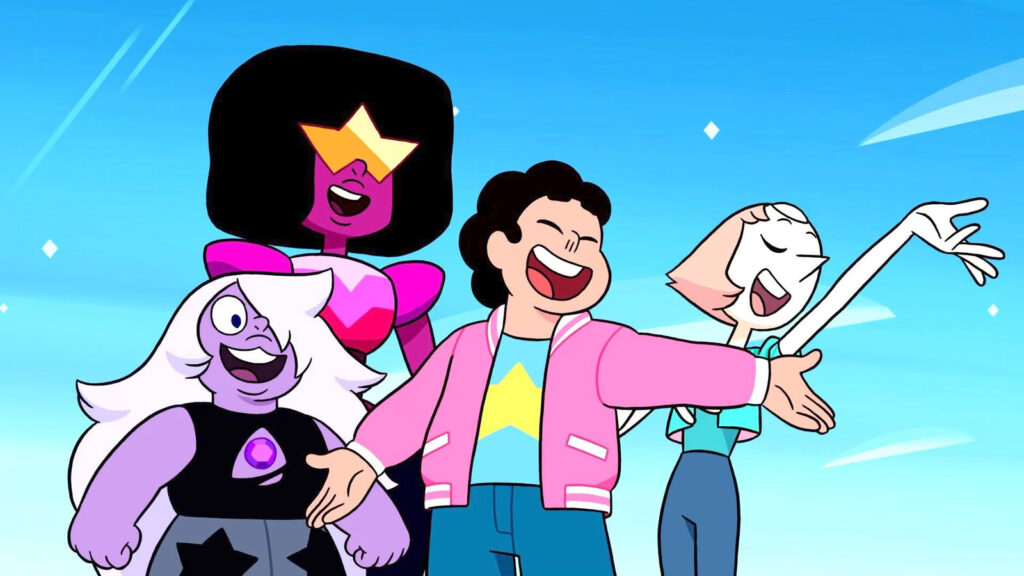Anime has influenced Cartoon Network programming since the network’s inception, but “Steven Universe” has taken it to new heights, taking visual, thematic and structural cues from the medium as well as parody and homage. Sugar was influenced by Hayao Miyazaki’s first TV show, “Future Boy Conan,” as well as shows like “Dragon Ball,” “Sailor Moon” and “Revolutionary Girl Utena,” the last of which influenced “Steven Universe”‘s tone, narrative structure, drama and breaking of gender barriers.
Indeed, gender is at the heart of “Steven Universe.” The show takes inspiration from the “magical girl” anime genre, but features a boy protagonist, a far cry from the traditional masculine protagonists often found in manga. Steven is never afraid to show emotion, and his openness is embraced. This culminates in the creation of Stevonnie, an androgynous “fusion” of Steven and his friend Connie, and the couple Ruby and Sapphire. This came on the heels of “Legend of Korra,” which introduced a gay couple in its 2014 finale, but it was also unspoken because Nickelodeon had not.
But Steven Universe was bolder, more direct. Its legacy is as a groundbreaking show in queer representation. Even Nimona creator ND Stevenson credited Steven Universe with paving the way for their show She-Ra and the Princesses of Power. In an interview with Paper Magazine, he said, “Even the initial discussion of our plans to include queer characters and relationships was only possible because Steven Universe did it first.” We can only imagine what shows will follow.


